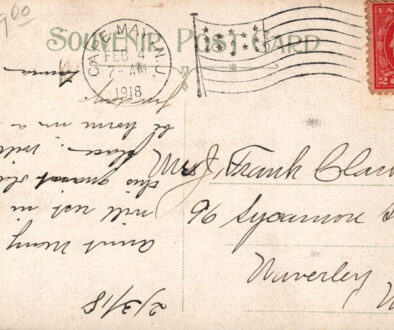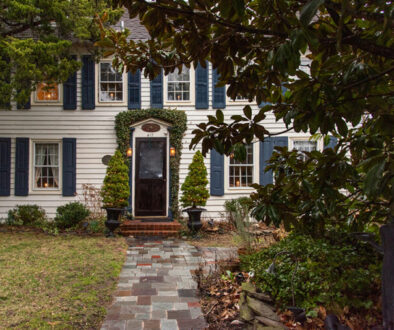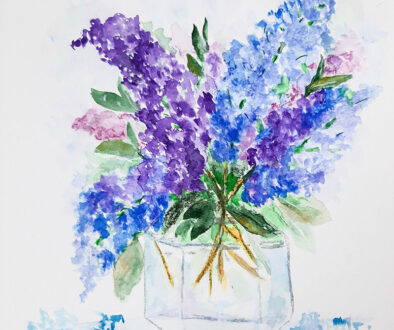Victorian Medicine: Advances and Retreats in Health
I find it delightful that men of the Cape May and Philadelphia Physick family were doctors, including Cape May’s Victorian gentleman, Dr. Emlen Physick, Jr., whose legacy is the 1879 Emlen Physick Estate in Cape May. It’s like meeting or knowing an artist named Art. Or a chef named Cook.
An archaic variant of “physic,” “physick” has several meanings, including the practice or profession of medicine, according to Merriam-Webster. Physick men were true to their name. Philip Syng Physick, Emlen’s grandfather, renowned as the Father of American Surgery, invented surgical procedures and medical instruments still in use today, including the stomach pump, a radical, life-saving invention. Emlen Physick, Sr.’s only stipulation in his will granting Emlen, Jr. his fortune, was that he “would prefer that my son Emlen should study medicine.” And he did.
Emlen Physick, Jr. studied medicine, graduated from the University of Pennsylvania Medical School, and received his inheritance. Emlen, Jr. never practiced medicine as his grandfather did, but he served in leadership positions in the county medical community, was generous in support of individuals in need of financial help for their own medical training, and mentored Dr. Anna B. Hand as she grew her medical practice in Cape May. Dr. Hand was born in Cape May County, and, in 1886, began at the Women’s Medical College in Philadelphia. After graduating and working in the city, Dr. Hand opened a practice in 1892, the first woman to do so.



Each year, a new tour of Cape May’s Emlen Physick Estate is written and researched by Cape May MAC’s Curator Ben Ridings.This year’s tour is titled “The Dr. Is In.” Beginning in April, tours of the 1879 Physick House Museum will feature information about the medical life of Dr. Physick and his family, with medical artifacts on display.
Victorian medicine reflected the contrasts of its time. There were incredible scientific and medical advances in the understanding of health and treatment of the sick alongside great divides in healthcare between those with means and those without.
Many Victorian era medical breakthroughs were groundbreaking and included advances in nursing care, anesthesia, pain relief, medical instruments, and medical procedures. Nursing care became a profession and advanced by leaps and bounds with standards for cleanliness and wound care. In 1846, Fanny Longfellow, spouse of the poet, was the first American woman to submit to anesthetized childbirth. She hailed the new use of chloroform as “the greatest blessing of this age.” Even Queen Victoria used anesthesia during her eighth childbirth in 1853. Organic chemistry produced new pain relievers including acetylsalicylic acid, now known as aspirin, first marketed as a loose powder in 1899. The modern hypodermic syringe was invented in 1853 by Scottish doctor Alexander Wood. Daniel Hale Williams, born in Hollidaysburg, Pa., founded the first Black-owned hospital in America, and performed the world’s first successful heart surgery, in 1893.
Still, Victorian America remained an unhealthy and often deadly time and place, according to Victorian America, Transformations in Everyday Life, 1876-1915 by Thomas J. Schlereth.
“Life expectancy improved if one lived to middle age, but infancy and childhood remained dangerous life stages. Americans in rural environments lived longer than did those in urban settings, whites survived longer than did nonwhites, and women lived longer than men.”
Death came in many ways, Schlereth says, and the leading causes were infectious diseases that were concentrated in, then spread outward from the country’s cities. Epidemics of yellow fever, cholera, and smallpox broke out intermittently, and influenza, pneumonia, typhus, scarlet fever, measles, whooping cough, and tuberculosis were “ever-present.” Tuberculosis, or TB, also called “consumption,” was the country’s greatest killer disease prior to 1915.
During this time, patent medicines competed with folk medicines, and with no government regulation, all sorts of concoctions touted as medical marvels flooded the market.
This year the Carroll Gallery in the Carriage House of the Physick Estate, 1048 Washington St., presents a free exhibit from spring through late fall highlighting the unregulated, huckster side of Victorian medicine. “Quackery: The Age of Questionable Medical Marvels” is open April 14-October 31 and features some of the so-called medical marvels of the late 19th and early 20th century. Many of these “curatives” were not only ineffective, but they were also downright dangerous. Visitors will learn about these so-called remedies, and the societal and economic forces that unleashed these questionable treatments on the public, driven by hucksterism, false advertising, and get-rich-quick schemes. Don’t miss Professor Hudzik’s Medicine Wagon—a replica of what would have been used to purvey such cure-alls on the backroads of America—complete with a QR code to hear what his spiel might have sounded like.



